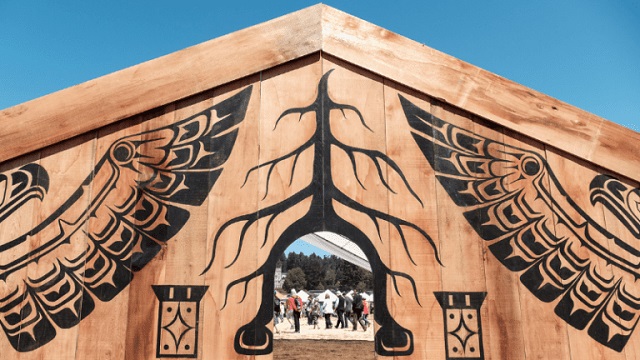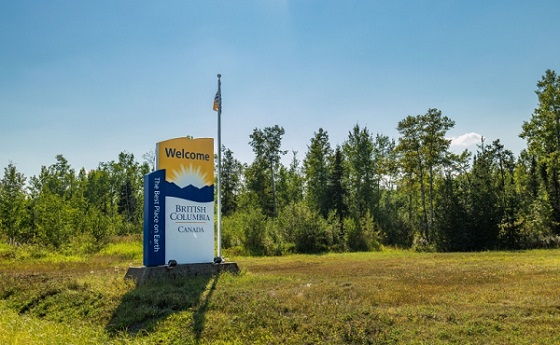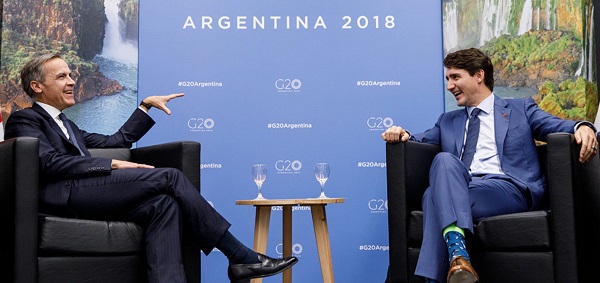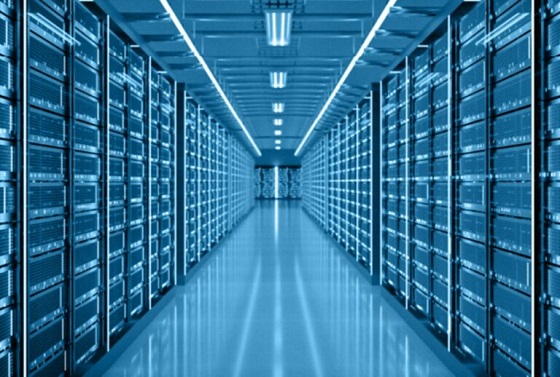Indigenous
B.C.’s plan to ‘reconcile’ by giving First Nations a veto on land use

From the MacDonald Laurier Institute
By Bruce Pardy
UNDRIP-inspired land law reforms are poised to turn province into an untenable host for mining, forestry and much more.
We live in strange times. A new generation of political leaders seems determined to cripple their own societies. Prime Minister Justin Trudeau, of course, comes to mind. But in Canada, he is not alone. In British Columbia, NDP Premier David Eby is preparing to bring his province to its knees.
The B.C. government plans to share management of Crown land with First Nations. The scheme will apply not to limited sections of public land here and there, but across the province. The government quietly opened public consultations on the proposal last week. According to the scant materials, the government will amend the B.C. Land Act to incorporate agreements with Indigenous governing bodies.
These agreements will empower B.C.’s hundreds of First Nations to make joint decisions with the minister responsible for the Land Act, the main law under which the provincial government grants leases, licences, permits and rights-of-way over Crown land. That means that First Nations will have a veto over how most of B.C. is used. Joint management can be expected to apply to mining, hydro projects, farming, forestry, docks and communication towers, just to start. Activities at the heart of B.C.’s economy will be at risk.
In 2007, the United Nations General Assembly adopted the Declaration on the Rights of Indigenous Peoples (UNDRIP). UNDRIP states, among other things, that Indigenous people own the land and resources of the countries in which they live. They have “the right to the lands, territories and resources which they have traditionally owned, occupied or otherwise used or acquired … to own, use, develop and control.”
At the time, Canada sensibly voted “no,” along with the United States, Australia and New Zealand. Eleven countries abstained. In 2016, Trudeau’s government reversed Canada’s objection.
As a General Assembly declaration, UNDRIP is not binding in international law nor enforceable in domestic courts. But in 2019, under the leadership of Eby’s predecessor John Horgan, the B.C. legislature passed Bill 41, the Declaration on the Rights of Indigenous Peoples Act. The act requires the government of B.C. to “take all measures necessary to ensure the laws of British Columbia are consistent with the Declaration.” Eby’s joint management plan is the next step in this project.
Long before UNDRIP, the Supreme Court of Canada created a constitutional “duty to consult” with Aboriginal peoples. The court said that the “honour of the Crown” governs the relationship between the government and Aboriginal people. The Crown’s fiduciary duties include a duty to consult whenever proposed action may adversely affect established or asserted Aboriginal rights under Section 35 of the Constitution. This duty is notoriously uncertain, onerous and time-consuming. It has become an albatross around the neck of the Canadian resource industry. The courts seem unable to specify what the duty to consult requires, except after the fact.
Now, the B.C. government aims to make things even more unpredictable. Whatever the contours of the right to be consulted, the Supreme Court at least has been clear that it does not constitute a veto. Eby will create one.
Shortly before the B.C. legislature passed Bill 41 in November 2019, the Continuing Legal Education Society of British Columbia sponsored an Aboriginal Law Conference featuring several Indigenous proponents of the bill. They promised that the new law would render the province unrecognizable.
It will “set up a whole new norm,“ “give teeth to (UNDRIP),” and move the province away, if “not fully,” from the Westminster model of governance. The veto to be conferred on Indigenous interest groups, they said, will mean that “consent will not be given very often, if at all.”
“We’re not talking small changes; we’re talking big changes,” one speaker suggested, adding that money provided by the government so far hasn’t been enough.
“Compensation for sacred sites, for lands taken, for relocation … it’s going to be an overwhelming number of compensation claims … and so I’m hoping that the province is ready for that…. Life (in B.C.) can and will change.”
For many, it is likely to change for the worse. B.C. could become an untenable host for land-based, resource-related enterprise. Impenetrable layers of red tape would entangle applications for leases and licenses. The price for First Nations approvals could be an increasing share of royalties and kickbacks, without which consent will be refused. Both governments and First Nations will siphon an ever-larger piece of a shrinking pie.
The government’s timeline is short. Written submissions will be accepted until the end of March, and anyone giving feedback will be limited by how little information the B.C. government has offered in the consultation. Bureaucrats will begin drafting amendments to the Land Act in early February, and the government plans to introduce a bill in April or May.
If you are feeling grateful not to live in B.C., don’t count your chickens. In 2021, Parliament passed its own version of B.C.’s Bill 41, the federal United Nations Declaration on the Rights of Indigenous Peoples Act. It requires the federal government to “take all measures necessary to ensure that the laws of Canada are consistent with the Declaration.” An action plan outlining more than 100 specific measures was released in 2023.
In a speech to the B.C. Business Council in 2016, I argued that our leaders could not do a better job of preventing Canadian business from succeeding in the global economy. I underestimated them. Their determination and ingenuity know no bounds.
Bruce Pardy is executive director of Rights Probe, professor of law at Queen’s University, and senior fellow with the Macdonald-Laurier Institute.
Indigenous
Top constitutional lawyer slams Indigenous land ruling as threat to Canadian property rights

From LifeSiteNews
One of Canada’s top constitutional legal experts blasted the push by federal, provincial, and municipal officials for all-encompassing Indigenous “reconciliation,” noting that the reality is all Canadians are and should be equal under the law and no one alive today is responsible for proven historical wrongdoings.
John Carpay, founder and president of the Justice Centre for Constitutional Freedoms (JCCF), noted in a recent commentary published in The Epoch Times that so-called reverse racism against non-Indigenous Canadians is still “racism.”
“Well-intentioned racism, to achieve the vague objective of ‘equity,’ is still racism,” Carpay noted.
“The only sure path to reconciliation, social harmony, and equal opportunity in Canada is the principle of equal rights for all, special privileges for none.”
Carpay noted that “the fact that aboriginal ethnic groups arrived in Canada earlier than other ethnic groups should be completely irrelevant when it comes to the application of the law.”
“Nobody disputes that different aboriginal tribes lived in this land before the arrival of Europeans, Africans, and Asians. The question is: Why should this fact matter?” he noted.
Carpay observed that when officials and courts apply the “law” differently to some “Canadians because of their race, ancestry, ethnicity, or descent,” the predictable and inevitable outcome “is strife, resentment, and fear.”
His comments came in light of a recent court ruling in British Columbia affecting property rights, Cowichan Tribes v. Canada (Attorney General), which saw the provincial Supreme Court rule that decades-long land grants by the government were not valid and violated a land title held by the tribes.
In essence, as noted by Carpay, the court “told the people (of various ethnicities) who live in some parts of Richmond, B.C., that the money they paid for their own properties does not guarantee them the right to own and enjoy their own homes.”
“The court ruled that the land titles system in B.C., which is built on the concept of indefeasible (indestructible) title, cannot be used or relied upon in the face of Cowichan claims. The Musqueam Indian Band and the Tsawwassen First Nation, claiming the same territory, also lost in court,” he stated.
Carpay noted that such a court ruling will only cause more division among Canadians and Indigenous peoples.
“Does anyone seriously believe that this Cowichan court ruling will bring reconciliation between Canadians of aboriginal ancestry and Canadians whose ancestry is Chinese, East Indian, Filipino, Nigerian, German, or English?” he observed.
“Of course not. The only results will be inter-ethnic fear, strife and conflict.”
He then observed what is a fact with land claims, noting, “Is there even one Canadian alive today about whom it could honestly be said that she or he stole land away from aboriginals?”
“Of course not. The court’s legal reasoning is based on inter-generational guilt, whereby people must pay for the sins (real or alleged) of their great-great-great-great-great-great-great-grandfathers. If one were to apply the court’s logic to today’s Germans and Japanese, these two ethnic groups would be forced to pay today for the atrocities that their ancestors committed during World War II,” he stated.
“Every continent features a long history of military, linguistic, cultural, and economic conquests as between different people groups. Would it be a good idea to apply the principle of inter-generational guilt to all of the world’s ethnic groups and countries? If not, then why try it now in Canada?”
Despite the concerns raised by Carpay, some federal politicians want to make it a crime to “deny” still unproven mass grave residential indigenous schools deaths claims.
Carpay warned that defining legal rights based on a person’s “membership in an oppressor’ group or a ‘victim’ group is Marxist.”
“Marxism repudiates the dignity and value of the individual, replacing it with a fixation on groups that are perpetually at war with each other,” he noted.
As reported by LifeSiteNews, new private members’ Bill C-254, An Act To Amend The Criminal Code introduced by New Democrat MP Leah Gazan, looks to give jail time to people who engage in so-called “Denialism.” The bill would look to jail those question the media and government narrative surrounding Canada’s “Indian Residential School system” that there are mass graves despite no evidence to support this claim.
In 2021 and 2022, the mainstream media ran with inflammatory and dubious claims that hundreds of children were buried and disregarded by Catholic priests and nuns who ran some Canadian residential schools. The reality is, after four years, there have been no mass graves discovered at residential schools.
However, as the claims went unfounded, since the spring of 2021, over 120 churches, most of them Catholic, many of them on indigenous lands that serve the local population, have been burned to the ground, vandalized, or defiled in Canada.
Last year, retired Manitoba judge Brian Giesbrecht said Canadians are being “deliberately deceived by their own government” after blasting the former Trudeau government for “actively pursuing” a policy that blames the Catholic Church for the unfounded “deaths and secret burials” of Indigenous children.
Fraser Institute
Courts and governments caused B.C.’s property crisis—they’re not about to fix it

From the Fraser Institute
By Bruce Pardy
In British Columbia, property rights are in turmoil. The B.C. Supreme Court recently declared that Aboriginal title exists on 800 acres of land in Richmond, a suburb of Vancouver. Aboriginal title, said the court, is “senior and prior” to fee simple interests. In the shadow of the decision, given the implications, Aboriginal title claims are receiving more attention. Kamloops and Sun Peaks ski resort are targets in one such claim. Meanwhile, the B.C. government has been conferring Aboriginal title across the province too. It continues to make agreements, such as on Haida Gwaii, to transfer control over land use in the province.
Courts and governments have caused this problem. The framers of Canada’s new constitution, adopted in 1982, excluded rights to private property. But at the last hour, they guaranteed existing Aboriginal rights and title. Over decades, the Supreme Court of Canada has expanded the scope of those rights. The recent decision about Richmond is a culmination of its work. That decision is under appeal, first to the B.C. Court of Appeal. After that, we may find out if the Supreme Court approves. But that could take years.
It’s not just the courts. In 2015, the Trudeau government agreed to implement the United Nations Declaration on the Rights of Indigenous Peoples (UNDRIP). UNDRIP says that Aboriginal groups have the right to own, use, develop and control any lands that they traditionally occupied or used. In 2019, the B.C. legislature incorporated UNDRIP into BC law. Known as DRIPA, the statute requires B.C. law to be consistent with UNDRIP. The NDP government has been granting Aboriginal title and control across the province accordingly.
What can be done? The Canadian constitution has an onerous amending formula. Repealing the section on Aboriginal rights would be next to impossible. So would adding private property guarantees to the Charter. But last week, Dwight Newman, professor of law at the University of Saskatchewan, suggested an alternative in the Post. Rather than attempt wholesale change, he proposed an amendment specific to B.C.
Section 43 is one of the ways to amend the Canadian constitution. It allows changes “in relation to any provision that applies to one or more, but not all, provinces.” The requirements are simple. The legislature in one province and the federal Parliament must both pass a resolution declaring the amendment. That’s it. Such a resolution, Newman suggests, could guarantee that private property in B.C. has priority over Aboriginal title.
He might be right. Section 43 has been used, for example, to alter constitutional denominational school rights in Quebec and Newfoundland. In 1993, New Brunswick used Section 43 to add a provision to the Charter about linguistic rights in the province.
But Section 43 might be narrower than hoped. The New Brunswick amendment was not challenged in court at the time of its enactment. So, yes, Section 43 was used to change the Charter, but not with judicial benediction. Moreover, the Supreme Court has not considered the ways in which Section 43 can be used. Section 43 amendments so far have been minor, mere “tweaks” to the constitutional order. We do not know what meaning the Court might give to “any provision that applies to one province.” It could mean any new provision, but more likely it means any existing provision that applies only to the province. Which would rule out using Section 43 to protect property rights from Aboriginal title in B.C. If the Court allowed Section 43 to be used for that purpose, then Section 43 could theoretically be used for anything, including amending the Charter wholesale until each province had its own version.
Even if Section 43 could be used to fix the property mess, it requires both the province and Ottawa to act. In addition, B.C. legislation requires that such changes be first approved by referendum. The B.C. and federal governments have helped to cause the crisis and continue to do so. They seem intent on undermining the system of land tenure in their own society. They are not likely to disrupt the constitution to frustrate their own work.
Moreover, there are other, simpler places to begin. The federal government could reverse its support for UNDRIP. The B.C. legislature could repeal DRIPA. Neither sitting government will do that. Few political actors will step out of line on Aboriginal questions, even to defend the country’s land, economy, and people. Will we discover whether there is anything more Canadian, after all, than acquiescence? In Canada, truth and reconciliation has morphed into fiction and capitulation.
Canada’s property crisis runs deep, and not just in B.C. Aboriginal rights are widely regarded as the natural and proper order of things. Special status for Aboriginal people is deeply ingrained in Canadian culture as well as the constitution. But it is dead wrong. Legal rights should not depend on lineage or group affiliation. Everyone born in Canada is native to the place. In a free country, laws apply not to distinctive peoples, but to individual people and their private property.
-

 Daily Caller2 days ago
Daily Caller2 days ago‘Holy Sh*t!’: Podcaster Aghast As Charlie Kirk’s Security Leader Reads Texts He Allegedly Sent University Police
-

 Crime4 hours ago
Crime4 hours ago‘Modern-Day Escobar’: U.S. Says Former Canadian Olympian Ran Cocaine Pipeline with Cartel Protection and a Corrupt Toronto Lawyer
-

 Great Reset2 days ago
Great Reset2 days agoCanadian government forcing doctors to promote euthanasia to patients: report
-

 Alberta2 days ago
Alberta2 days agoSylvan Lake football coach fired for opposing transgender ideology elected to town council
-

 Carbon Tax1 day ago
Carbon Tax1 day agoCarney fails to undo Trudeau’s devastating energy policies
-

 Daily Caller16 hours ago
Daily Caller16 hours agoDemocrats Explicitly Tell Spy Agencies, Military To Disobey Trump
-

 Health1 day ago
Health1 day agoNEW STUDY: Infant Vaccine “Intensity” Strongly Predicts Autism Rates Worldwide
-

 Addictions1 day ago
Addictions1 day agoActivists Claim Dealers Can Fix Canada’s Drug Problem




